Wondering whether a carbon water filter is capable of removing PFAS from your drinking water?
We’ve shared everything you should know about carbon water filters for PFAS reduction in this article.
📌 Key Takeaways:
- A carbon filter can remove around 73% of PFAS on average.
- Not all carbon water filters reduce drinking water PFAS. Some remove virtually no PFAS, while others remove almost 100% of PFAS.
- Factors affecting a carbon filter’s ability to reduce PFAS in drinking water include the filter age, quality, size, and surface area, the type of carbon media used, the types of PFAS present, and the water chemistry.
Table of Contents
- 🚱 How Do PFAS Get Into Drinking Water?
- 🩺 What Are the Potential Health Risks of PFAS?
- 🧪 How Can I Test for PFAS in My Water?
- 🤔 So, Does A Carbon Filter Remove PFAS?
- 🔎 How Do Carbon Water Filters Remove PFAS?
- ⚗️ How Much PFAS Can A Carbon Filter Remove?
- 🧾 What Affects A Carbon Filter’s Ability To Remove PFAS?
- 🚰 How Can You Tell If A Carbon Filter Removes PFAS?
- 📑 Final Word
🚱 How Do PFAS Get Into Drinking Water?
PFAS are widely present in the environment, and they also take decades to break down, which makes them common pollutants in our water supplies.
There are several ways that PFAS may end up in the environment, including as a result of:
- Pollution from wastewater treatment plants
- Factory air emissions
- Runoff from firefighting foams
- Industrial waste
Once in the environment, PFAS can enter our surface water and groundwater supplies due to soil seepage and surface runoff.
While PFAS are no longer used widely in the US, they’re still imported into the country.
PFAS aren’t usually removed at the treatment plant by public water systems because water utilities don’t often have the facilities to address these chemicals.
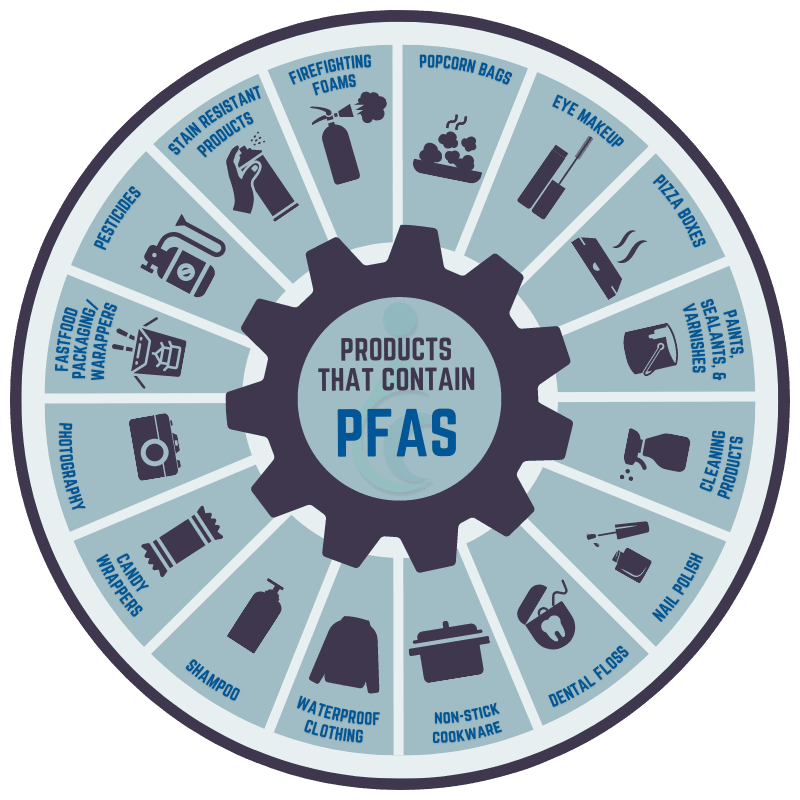
🩺 What Are the Potential Health Risks of PFAS?
A 2021 review of studies into the health effects of PFAS exposure reported that PFAS could affect the human body by increasing the risk of:
- Cancer
- Thyroid problems
- Liver and kidney disease
- Adverse immune effects
- Insulin and Lipid dysregulation
- Reproductive and developmental health effects
The study researchers acknowledge that these health effects were based on the study of “relatively few example compounds”, and that hundreds of other PFAS in water are lacking toxicity data. In other words, it’s highly likely that there are other health effects of PFAS exposure that we don’t know about yet.
🧪 How Can I Test for PFAS in My Water?
The best way to not only detect PFAS, but get an understanding of the PFAS concentration present in your tap water, is to buy a test package from a certified laboratory.
Lab testing gives you a detailed overview of both the PFAS contaminants that have been detected and the concentration that they were detected at.
A PFAS lab test costs hundreds of dollars, so it’s not for everyone. If you don’t want to spend so much on a water test, you can check your most recent annual Water Quality Report (if you’re on a municipal tap water supply) to see which PFAS have been detected by your water supplier.

🤔 So, Does A Carbon Filter Remove PFAS?
Generally, carbon filters can remove or at least reduce PFAS from tap water. However, this isn’t a guarantee, which is why not all manufacturers of carbon water filters claim that their filters can reduce these chemicals.
Some carbon water filters remove PFAS, while others don’t. Don’t assume that all water filters with a carbon bed are equal in their contaminant reduction abilities.
We’ve discussed the factors affecting a carbon filter’s ability to remove PFAS later in this article.
🔎 How Do Carbon Water Filters Remove PFAS?
Carbon water filters reduce or remove PFAS by adsorbing these chemicals into their filter media.
Adsorption is when contaminants physically and chemically accumulate on the activated carbon surface. As a highly porous material, activated carbon is an effective adsorbent and grabs onto contaminants like PFAS as water flows through the media.
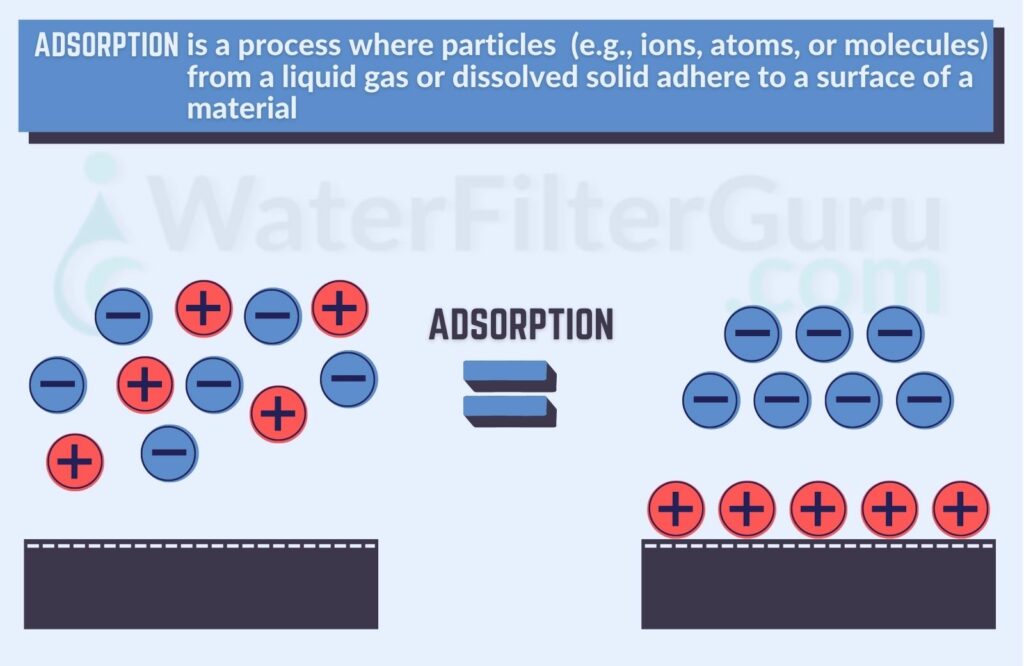
⚗️ How Much PFAS Can A Carbon Filter Remove?
According to a study by Duke and NC State scientists, activated carbon water filters removed 73% of PFAS contaminants on average.
However, the study noted that this contaminant removal percentage varied widely, and that the chemicals were entirely removed in some cases, while in others, they weren’t reduced at all.
The researchers concluded that changing the water filters is “probably a good idea” to maintain effective PFAS reduction levels.
🧾 What Affects A Carbon Filter’s Ability To Remove PFAS?
Let’s take a look at the factors that affect an activated carbon filter’s ability to reduce or remove PFAS from drinking water:
Filter Surface Area & Size
First, the filter size and surface area impact the concentration of PFAS it can remove from water flowing through the media.
The bigger the filter and the larger the surface area, the more PFAS chemicals can be captured across the media.
But in smaller filters with a smaller surface area, there’s less available space to capture the PFAS contaminants, reducing the filter’s PFAS removal abilities.
Type Of Carbon Used
There are a few different types of activated carbon media that may be used in home water treatment systems.
Granular activated carbon (GAC) is cited as an effective method of removing PFAS by the Environmental Protection Agency, but we couldn’t find much evidence to suggest that carbon block is as effective in PFAS removal.
A couple of sources say that catalytic carbon is capable of removing forever chemicals, but this media isn’t widely discussed as a solution for reducing PFAS.
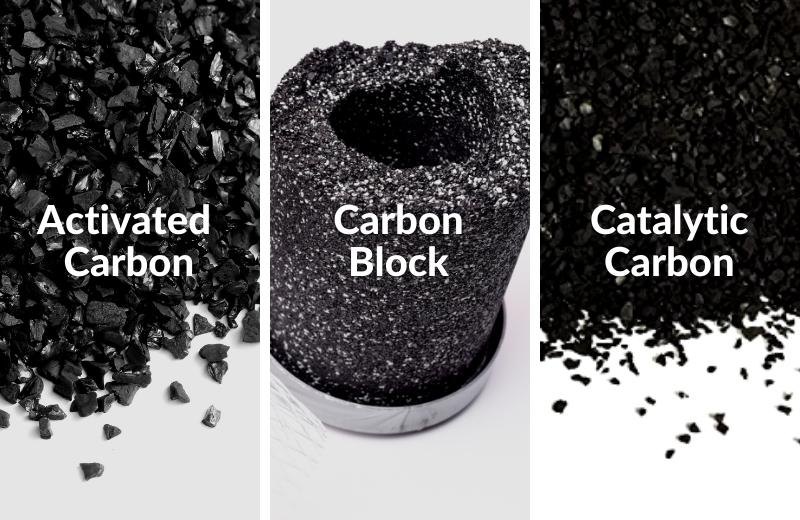
Types Of PFAS Present
The types of PFAS present in your water will also impact a carbon water filter’s ability to remove them.
There are tens of different PFAS compounds, far beyond the handful of chemicals that are better known. These compounds have varying chemical structures and sizes, which can affect their affinity for carbon surfaces.
Some PFAS compounds may be more difficult for an activated carbon filter to remove than others. Some may be small enough to slip through the carbon filter’s pores. Generally, activated carbon media is better at removing larger PFAS, like GenX, and longer-chain PFAS, like PFOA and PFOS. It’s not as effective at adsorbing shorter-chain PFAS, like PFBS and PFBA.
Adsorption Capacity
An activated carbon filter’s adsorption capacity also affects how much PFAS it can remove.
Adsorption capacity varies depending on factors including the filter quality, and the contact time that water has with the filter media.
Generally, the better quality the filter, and the slower the flow of water through the filter, the longer the contact time between water and the media, and the more PFAS the filter can remove.
Water Chemistry
The composition of the water you’re treating can impact PFAS removal.
There are a few water chemistry factors that could affect a carbon filter’s ability to reduce PFAS, including pH, temperature, and the presence of other contaminants.
Adjusting your water’s pH levels within a certain range may help to enhance PFAS removal. Activated carbon tends to remove contaminants the most effectively when water has a pH of less than 7.0.
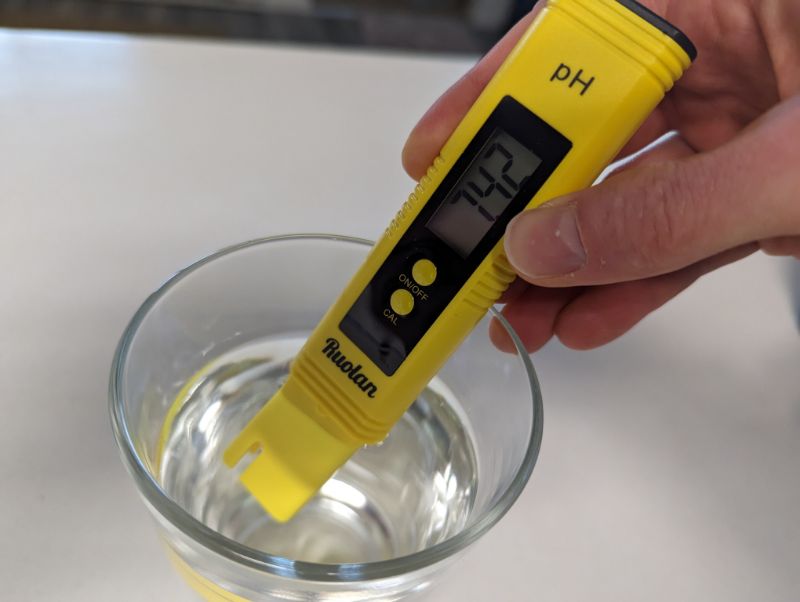
Filter Age
As an activated carbon filter reaches the end of its lifespan, it becomes less capable of removing contaminants like PFAS.
Toward the end of the filter life, it has a reduced capacity to trap impurities, and may allow contaminants to slip through the media with the water molecules.
That’s why it’s important to replace your filters on time – to ensure a long-lasting performance from your water filtration system.
Other Media Or Filters
Many activated carbon filters are made with a blend of carbon and other filter media, like ion exchange resins. These are also capable of reducing or removing PFAS, helping to reduce the overall PFAS concentration.
You often also find activated carbon filters in reverse osmosis systems, which combine carbon filtration with reverse osmosis membranes. Reverse osmosis filters can remove up to 99.9% of all total dissolved solids, including PFAS, so they enhance the PFAS reduction capabilities of a carbon filter.
🚰 How Can You Tell If A Carbon Filter Removes PFAS?
The best way to tell if a carbon filter removes PFAS is to check the product details and look for third-party test data.
Many manufacturers share their test results online, so you’ll be able to see which PFAS contaminants the filter has been tested to remove (if any), and what percentage of chemicals it was able to remove.
Manufacturers of water filtration systems can also get their filters certified by the NSF for PFAS reduction. There was originally a dedicated NSF Standard for PFAS – P473 – but from what we understand, this Standard is now no longer relevant and manufacturers can simply obtain an NSF 53 certification (for the removal of contaminants with health effects) or an NSF 58 certification (for reverse osmosis systems).
If a manufacturer doesn’t clearly outline exactly what contaminants its filters can remove, contact customer service and ask to see a copy of the test data.
Does test data or a certification prove that a tap water filter can remove all PFAS chemicals from water? Unfortunately not. There are more than 4,700 PFAS chemicals that exist today, and most manufacturers only get their filters tested to remove a few of the most common PFAS, including PFOA and PFOS.
It’s possible that your water could contain traces of other types of PFAS that are small enough to slip through a carbon filter’s media. So, the manufacturer’s broad claim that its filter can “remove PFAS” may not be entirely true.
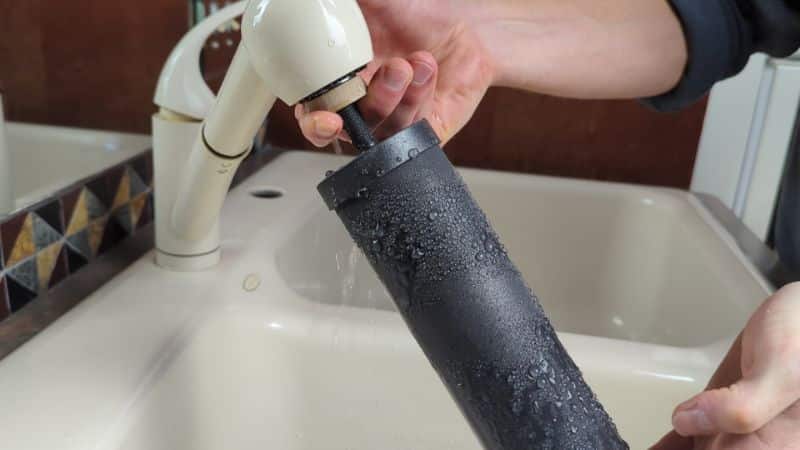
📑 Final Word
Under the right circumstances, a granular activated carbon water filter should be capable of reducing or removing PFAS.
However, not all carbon filters reduce PFAS. That’s why you might have noticed that many popular water pitcher brands, like Brita and PUR, don’t say that their carbon-based filters can remove these forever chemicals.
Do your research and make sure a water filter can reduce PFAS before you spend your money.

